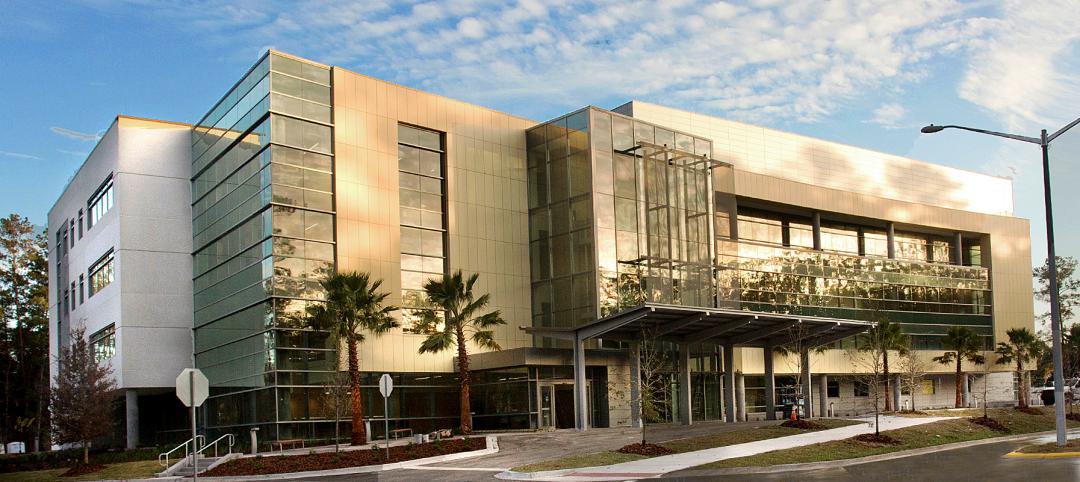Companies are realizing the importance and benefits of supply chain management to boost service, improve financials, and reduce operating costs. Efficient supply chains enable companies to be more competitive in the marketplace. Effective supply chain organizations are designed to deliver goods and services fast, cost effectively, and without compromising quality. Optimized and modern supply chain organizations align strategically with end-to-end business processes, realizing market and economic value and providing a competitive business advantage.
CBRE’s Project Management (PJM) platform delivers exceptional outcomes through its strategic supplier partner program, FUSION. With an estimated annual project spend nearing $75 billion globally, CBRE PJM relies on the value of the FUSION program to provide:
• Exceptional project delivery
• Accelerated completion of various capital expenditure projects
• Harnessed buying power of CBRE collectively
• Best-value solutions
Delivering Exceptional Outcomes
Organizations are often consumed with low-cost solutions. Although cost savings are appealing, it’s important to consider a holistic approach to offering best-value and total cost of ownership. If procured goods or services are predicated on unit price alone, there is a myriad of ancillary benefits that most strategic suppliers struggle to offer due to the inability to scale and invest with the needs of the business, or as demand fluctuates. In fact, average acquisition costs account for roughly 20–35% of total cost for most products and services. The balance and majority of total cost is comprised of costs associated to operations, training, maintenance, warehousing, environmental, quality, transportation, and consideration for the salvage value. By contrast, the FUSION program is a tool to enhance operational performance and ensure objectives are met on time and under budget. The program is extremely flexible with client needs allowing project-based solutions to offer the most favorable outcomes. FUSION is not only a mechanism to leverage spend, but a marketplace differentiator built by purchasing category and on the comprehensive foundation of:
• Speed to market
• New product innovation
• New product development
• Increased quality
• Best cost options
• Turnkey solutions
• Program scale
Early Engagement
With sufficient planning and early supplier engagement on projects, FUSION can maximize savings potential and accelerate project completion without compromising quality results. To capitalize on the benefits the program can offer, it’s critical to engage FUSION supplier partners at the onset of project design, or as initiatives are being conceived within architect and engineering (A/E) organizations in the planning phase.
Generally, optimal value is realized when early supplier engagement is employed at the first stages of concept development. An organization’s competitiveness depends on the amount, quality, cost, and timing of its materials and supplies, and the effectiveness of its supply chain. Factors include:
• Materials
• Prototypes
• Value-engineering
• Manufacturing processes
• Packaging
• Logistics
Considered a fundamental activity, CBRE actively engages its suppliers early as 80% of product costs are identified and committed to during the design phase.
Cost Savings
Hard cost savings and avoidances are paramount to any organization seeking to optimize its supply chain, but also to deliver value-added goods and services. With an emphasis on supplier relationship management in critical spend areas, FUSION supplier partners not only create sustained value for clients but constantly seek continuous improvement opportunities to develop a shared strategy and roadmap that include savings initiatives, new product offerings/development, and end-of-life materials. This collaborative approach lends itself well to delivering additional benefits that include:
• Extended warranties
• Extended payment terms
• Product availability and consistency
• Life-cycle services (sustainability initiatives)
• Reduction of operating costs
The ability to deliver double-digit cost reductions from one category of spend to the next has a profound impact on capital budgets and client outcomes. FUSION’s strategic supplier-partner program is heavily focused on various metrics including key performance indicators (KPIs), service level agreements (SLAs), continuous benchmarking, and spend analysis to deliver the greatest client experience with the most positive result.
Proactively Managing the Program
It’s important, if not critical, to ensure effectiveness measurements are in place to reflect the organization’s strategic contribution. As FUSION evolves, CBRE is continuously seeking to identify and deploy additional baseline metrics within the program. Which allows a more personalized approach in delivering metrics that tie back to each individual client, tailoring the output based on their needs.
Conversely, taking a “one-size fits all” approach may result in poor supplier performance and miss the mark on key client objectives and expected outcomes. These supplier measurement indicators will help create a cadence and sense of accountability that expands upon the day-to-day process, becoming more strategic in nature. Some examples used inside of the FUSION program include:
• Proportion of suppliers participating in early product design or other joint value-added activities
• Supplier lead-time indicators
• Savings achieved using the sourcing program
• Supplier quality levels, cost performance, and delivery performance compared to other world-class performance targets
• Best practices for supplier performance improvement
The outcome of proactively measuring on a continual basis will result in a program that can deliver strategic value from one project to the next, but also serve as a benchmark to assess current and future state needs and trends.
Conclusion
FUSION will evolve over time as CBRE’s corporate business needs and objectives continue to shift in support of its clients’ needs from a regional and global perspective. CBRE will continue to listen intently to its clients, solving various challenges and providing ultimate client solutions. FUSION, as a program and client delivery mechanism, is equally as adept in responding to those ever-changing needs through a best-value solution. Remember, early supplier engagement is crucial to not only create sustained value for clients but to also discover continuous improvement opportunities and cost savings initiatives.
About the Author
Terry Doumkos is the Global Leader of Strategic Sourcing Project Management and Global Leader of CBRE’s FUSION Program.
Related Stories
| May 1, 2013
Groups urge Congress: Keep energy conservation requirements for government buildings
More than 350 companies urge rejection of special interest efforts to gut key parts of Energy Independence and Security Act
| May 1, 2013
World’s tallest children’s hospital pushes BIM to the extreme
The Building Team for the 23-story Lurie Children’s Hospital in Chicago implements an integrated BIM/VDC workflow to execute a complex vertical program.
| Apr 30, 2013
Tips for designing with fire rated glass - AIA/CES course
Kate Steel of Steel Consulting Services offers tips and advice for choosing the correct code-compliant glazing product for every fire-rated application. This BD+C University class is worth 1.0 AIA LU/HSW.
| Apr 30, 2013
Healthcare lighting innovation: Overhead fixture uses UV to kill airborne pathogens
Designed specifically for hospitals, nursing homes, child care centers, and other healthcare facilities where infection control is a concern, the Arcalux Health Risk Management System (HRMS) is an energy-efficient lighting fixture that doubles as a germ-killing machine.
| Apr 24, 2013
North Carolina bill would ban green rating systems that put state lumber industry at disadvantage
North Carolina lawmakers have introduced state legislation that would restrict the use of national green building rating programs, including LEED, on public projects.
| Apr 24, 2013
Los Angeles may add cool roofs to its building code
Los Angeles Mayor Antonio Villaraigosa wants cool roofs added to the city’s building code. He is also asking the Department of Water and Power (LADWP) to create incentives that make it financially attractive for homeowners to install cool roofs.
| Apr 10, 2013
ASHRAE publishes second edition to HVAC manual for healthcare facilities
The American Society of Heating, Refrigerating and Air-Conditioning Engineers (ASHRAE) has published a second edition of its “HVAC Design Manual for Hospitals and Clinics.”
| Apr 2, 2013
6 lobby design tips
If you do hotels, schools, student unions, office buildings, performing arts centers, transportation facilities, or any structure with a lobby, here are six principles from healthcare lobby design that make for happier users—and more satisfied owners.
| Apr 2, 2013
4 hospital lobbies provide a healthy perspective
A carefully considered entry zone can put patients at ease while sending a powerful branding message for your healthcare client. Our experts show how to do it through four project case studies.

















